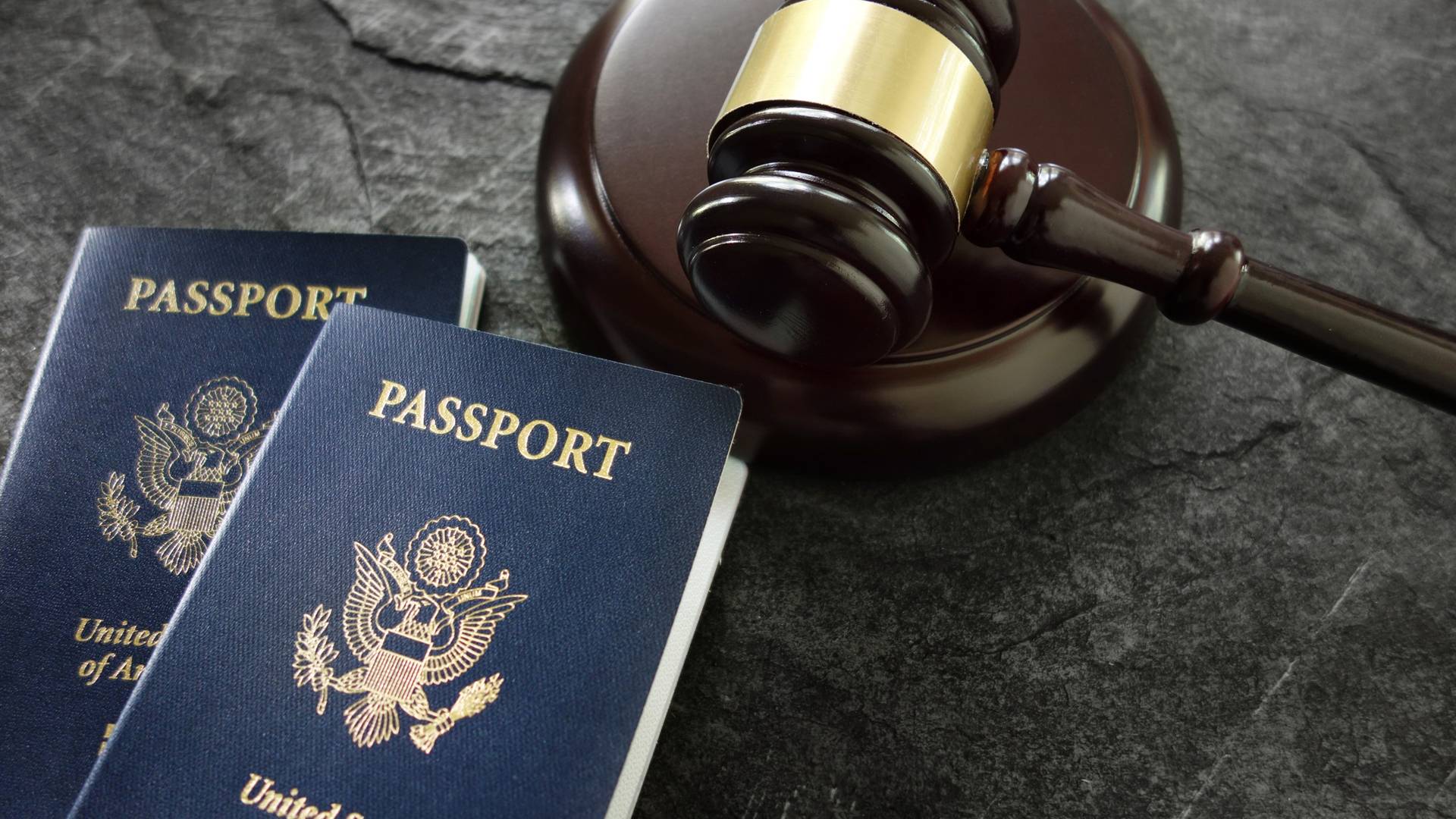
Tampa, FL Citizenship & Naturalization Attorney
Individuals who don’t acquire U.S. citizenship through birthright can become citizens through naturalization. However, you must demonstrate that you meet the requirements and have the right attributes to qualify for citizenship.
Naturalization is not merely a procedural step but a substantial legal process involving several checkpoints. Each prospective citizen has to clear hurdles related to language proficiency, understanding of U.S. history, and legal residency duration. The process requires meticulous evidence collection and document preparation to ensure all criteria are unequivocally met.
Applying for naturalization can be challenging, stressful, and frustrating at times. With the help of our experienced citizenship lawyer in Tampa at American Dream Law Office, PLLC Law Office, PLLC, your pathway toward citizenship can be made less trying. We can help prevent mistakes that could cause your application to be delayed or denied.
At our firm, we understand how vital citizenship can be to our clients. It is the last step of your immigration journey and results in your being granted all the rights and privileges of every other American citizen in our great country.
Citizenship doesn't just offer voting rights and a U.S. passport; it also establishes a sense of permanence and security. A U.S. citizen can work without additional permits, is protected under U.S. law rights, and can bring family members to the U.S. more easily. Understanding these profound benefits helps motivate many to pursue naturalization with diligence and hope. For experienced guidance, speak with an experienced citizenship lawyer in Tampa from our firm.
Request a consultation with our Tampa citizenship and naturalization lawyer by phone at (813) 499-1250 or use our convenient online contact form to reach us.
Who is Eligible for Naturalization?
To become a U.S. citizen through naturalization, you must be:
- At least 18 years old.
- A lawful permanent resident (green card holder) for at least five years (three in certain situations).
- A continuous resident of the United States (the required period varies according to circumstances).
- Able to demonstrate good moral character.
- Able to understand and speak basic English.
- Familiar with U.S. history and government.
- Prepared to swear allegiance to the United States.
An immigration lawyer can assist in determining whether you meet the requirements, help document your qualifications, and assist with preparation for exams and interviews.
Navigating the eligibility requirements encompasses understanding nuanced legal specifications. For instance, demonstrating continuous residence doesn't just mean living in the U.S.; it requires maintaining intent as a resident without frequent or long trips abroad. A proficient naturalization attorney in Tampa can help address such details, ensuring your application is robust from all angles.
How A Citizenship Lawyer Can Assist
U.S. immigration law is complicated, and requirements can seem overwhelming. Knowing that a mistake could delay or deny your application makes the process even more problematic.
Working with a qualified naturalization lawyer in Tampa provides you guidance not only in filing your application correctly but also in preparing for and succeeding in the citizenship interview. Our team stays updated on shifting immigration policies, offering vital insights to prevent common pitfalls and delays. Our commitment is to navigate these complexities with you, ensuring your journey is as smooth as possible.
Many naturalization applicants find it helpful to work with an experienced immigration lawyer during the application process. If you want assistance with a naturalization application or to investigate or take legal action to combat excessive delays, our citizenship attorney and our team can provide diligent and committed help.
For experienced guidance, turn to a skilled citizenship lawyer. Contact us or call (813) 499-1250 to secure a consultation.
Frequently Asked Questions About Citizenship & Naturalization
How Long Does the Naturalization Process Take in Tampa?
The naturalization process in Tampa can vary based on several factors, including the workload of the local USCIS office and the specifics of your application. Generally, the entire process can take between 8 to 14 months from the time you file your application to receiving your citizenship certificate. This timeline includes the processing of your application, the biometrics appointment, the citizenship interview, and the oath ceremony. Applicants should also note that any mistakes or omissions in their paperwork can extend this timeline significantly. By consulting with a skilled citizenship attorney in Tampa clients trust, many potential delays can be mitigated.
What Are the Common Challenges in the Naturalization Process?
Common challenges often include meeting eligibility requirements, providing complete documentation, and successfully passing both the English and civics tests. Applicants might also face delays if they have a criminal record, tax issues, or extended periods outside the U.S. during the required residency period. A citizenship lawyer at American Dream Law Office, PLLC can address these challenges by providing personalized counsel and ensuring all documentation is correct and complete from the onset.
How Can a Citizenship Lawyer Assist with My Application?
Citizenship lawyers play a critical role in the naturalization process. They ensure that your application is thoroughly prepared and all requirements are met. They can prepare you for potential questions during your citizenship interview and ensure you understand the significance of each step. Tampa residents benefit from local attorneys who are familiar with the specific challenges faced in Florida's immigration landscape.
Is There an Advantage to Applying for Naturalization in Tampa?
Tampa's local USCIS offices have staff familiar with the diverse needs of immigrants in the region. Thanks to Florida's large immigrant population, individuals pursuing naturalization can rely on a wealth of local resources and communities. Moreover, our firm offers tailored solutions to bridge common gaps and help reinforce your application with the necessary legal framework and support.
What Should I Bring to My Citizenship Interview?
For the citizenship interview, you should bring your appointment letter, green card, passport, state-issued ID, and any documents establishing ongoing residence and employment. Additional records might be required for those with a criminal record or complex immigration history. Being prepared with the correct documents can significantly reduce the risk of needing additional interviews. Our team at American Dream Law Office, PLLC can offer detailed checklists and personalized advice to ensure you're fully prepared.
Contact the dedicated team at American Dream Law Office, PLLC Law Office, PLLC to schedule a consultation with a skilled citizenship attorney in Tampa. Call (813) 499-1250.
What Sets Us Apart
-
Ultimate ConvenienceAttorney Ahmad Yakzan is your reliable immigration attorney from St. Petersburg Tampa, Florida to Washington, D.C. We also have offices that are conveniently located to serve you in Clearwater, Dunedin, New Port Richey, Oldsmar, Land o’ Lakes, Plant City, Lakeland, and Zephyrhills.
-
Flexible CommunicationFor your convenience, we offer in-person, phone, or teleconferencing consultations. Attorney Ahmad Yakzan would be glad to accommodate you in one of our offices in St. Petersburg and Tampa, Florida.
-
Competitive PricesSpare no expense in attaining and protecting your American Dream® with the help of Attorney Ahmad Yakzan. Our small consultation retainer will be credited towards our legal fees when you retain our office. We offer competitive rates for excellent legal services.

Making a Difference in Our Clients' Lives
Read Our Five-Star Client Testimonials
At American Dream Law Office, PLLC, your dream is my dream, and it shows in our reviews! See for yourself what our clients have to say about working with us.
-
“He went above and beyond to make sure I would make it to the next step on becoming a citizen.”Mahmoud B.
-
“Ahmad has been with me through every step and and made me feel comfortable.”Nana S.
-
“I’m so glad we didn’t try to go through this lengthy and complicate process without them.”Lucia A.
-
“Hiring him gave me a complete sense of peace.”Isabella B.
-
“Today we finally got the approval for my husband’s green card”Aya B.
-
“The best and more loyal Lawyer I met in my life”Abed H.
-
“I could not have done this without his help. When it comes to relocating to another part of the world, there will always be obstacles to overcome, you will need help.”Michael H.
-
“He is very knowledgeable and does an excellent job of proactively communicating.”Crystal C.

